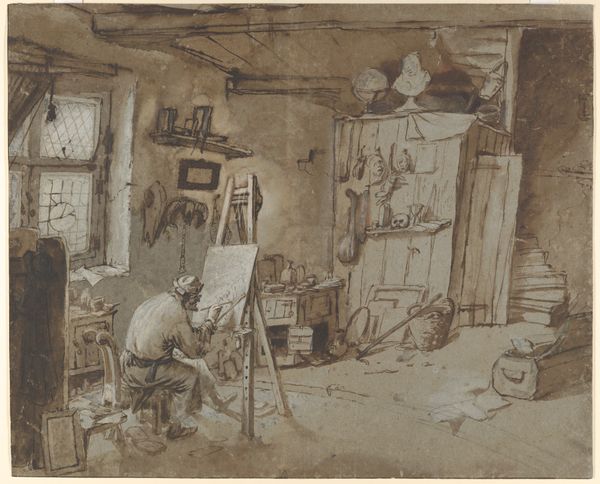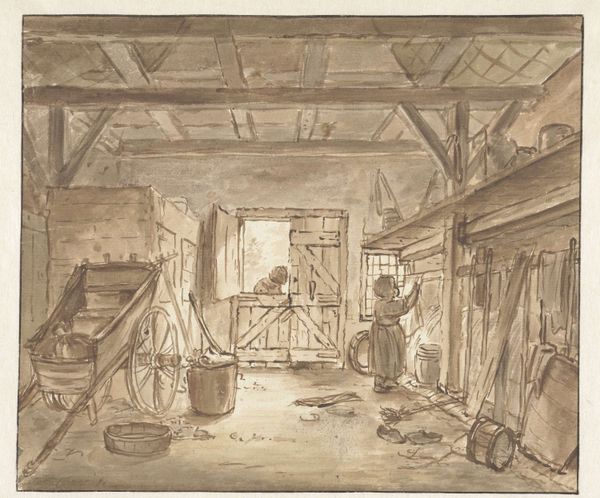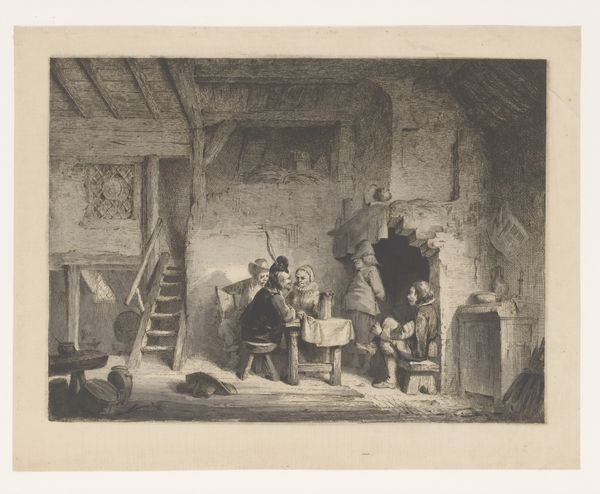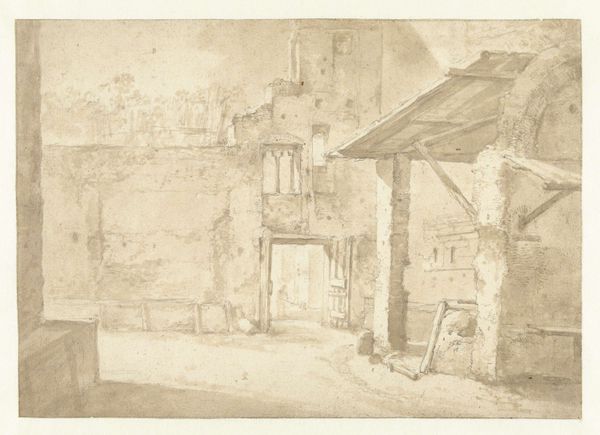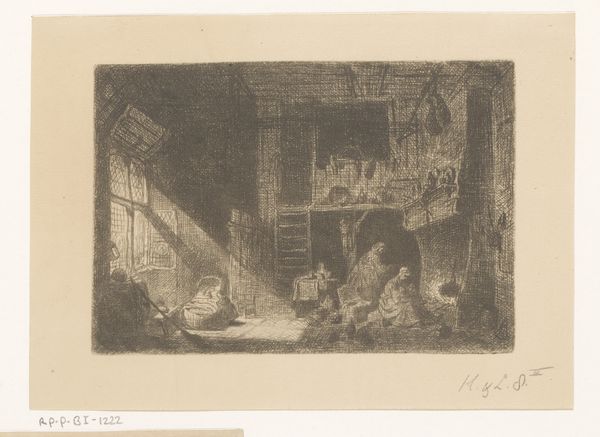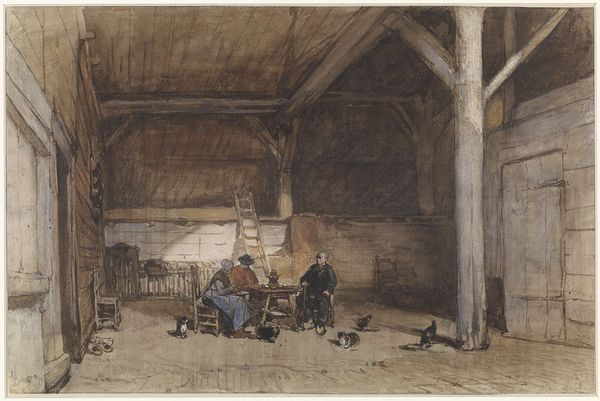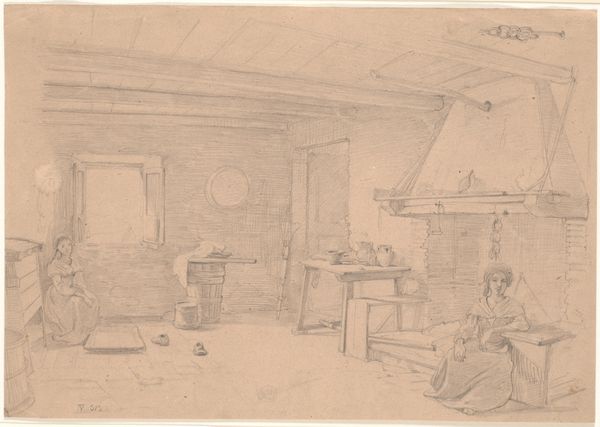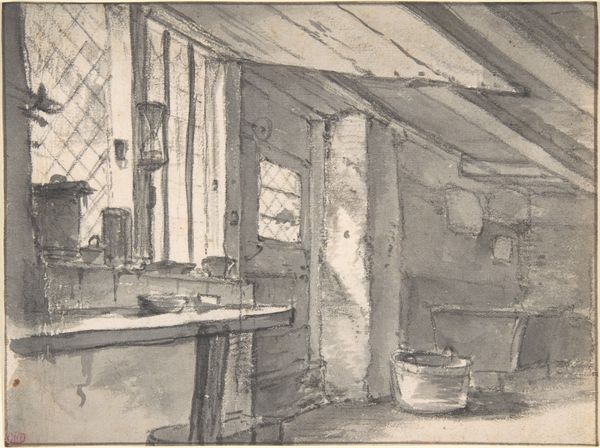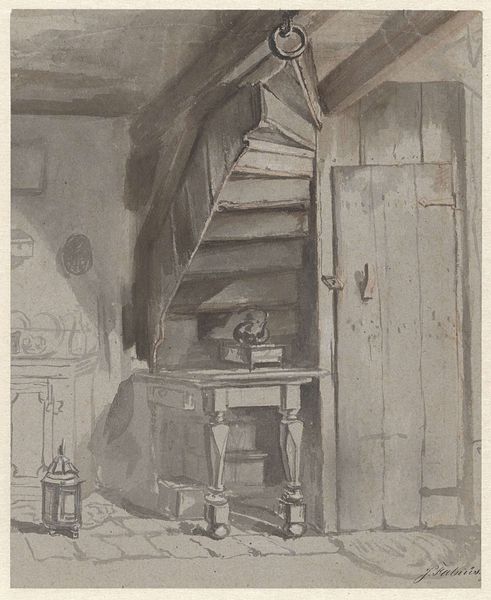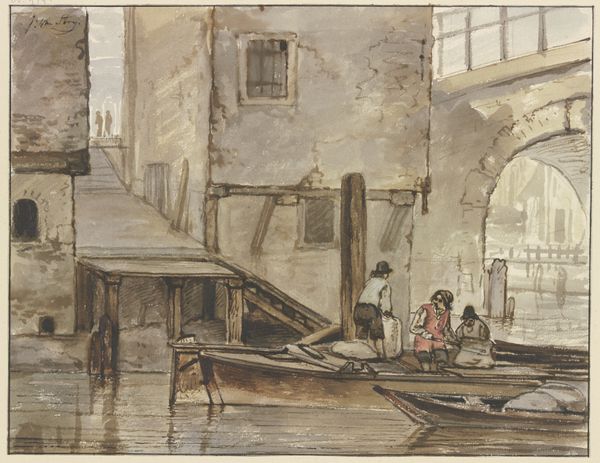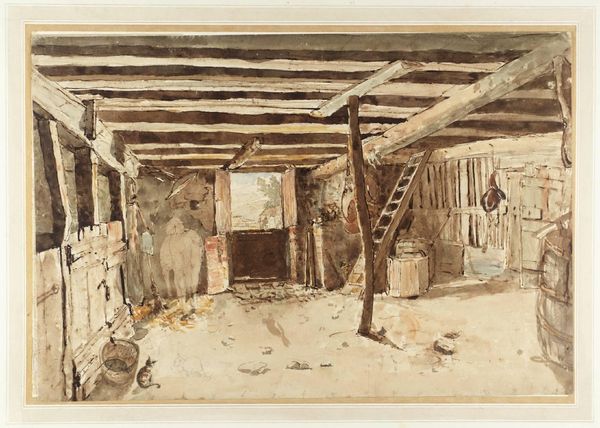
Dimensions: 9 3/4 x 13 1/4 in. (24.8 x 33.7 cm)
Copyright: Public Domain
Curator: Before us is an etching titled "Interior of Farm House," created sometime between 1700 and 1800 by an anonymous artist. Editor: My first thought is emptiness. The sepia tones and skeletal lines contribute to a stark and somewhat melancholic atmosphere. Is it meant to convey the simple dignity of rural life? Curator: It is intriguing. The composition leads your eye through the space: from the darker foreground to the diffused light in the background. There’s a clear geometric structure at play, reinforced by the linear elements, like the exposed beams of the ceiling. This strict architecture, of a humble farmhouse no less, is fascinating. Editor: Absolutely. Look at the recurrence of vessels throughout the space. The shelves brimming with pitchers near a sturdy wooden ladder—each a symbol of everyday utility. But their careful placement evokes images of ancient amphorae, their curved shapes quietly mirroring humanity's relationship with sustenance and labor. Even that huge conical vessel in the center: what stories could that hold? Curator: Interesting to frame them within archetypes. The vessels, like characters, give purpose to the internal shapes, but look how the texture is uniform: smooth paper for cracked and decaying plaster and unrefined, but also refined technique—it really pulls at our concept of beauty, of 'proper' composition in drawing. Editor: Right! But the texture seems a tool here, almost like ancient, coded, but simple alphabets that reveal a narrative of resilience. The sparse and basic necessities for life remind us that humanity's relationship with the earth never diminishes. The space, after all, implies that survival here is rooted to nature—not to aesthetics. Curator: You’re framing it with an interesting philosophical outlook, which leads me to wonder... what, if anything, would have existed within these containers, what textures, liquids, would have added to our experience as visual consumers of space and meaning! I wonder how much it relates to a historical perception of farm life from someone who maybe was not entrenched within it, that also dictates our experience. Editor: I wonder that as well! Despite not knowing the context, I wonder how the people who inhabited this place felt or felt that they should be seen or remembered based on symbolic things they had on their inside or surrounding spaces. Fascinating to consider its impact across so much time. Curator: Indeed. It's a thought-provoking piece that blends the beauty of form with evocative potential narratives, challenging viewers to contemplate the meaning imbued within simple subject matter. Editor: Yes, from basic geometric structure to domesticity, there is endless meaning.
Comments
No comments
Be the first to comment and join the conversation on the ultimate creative platform.
